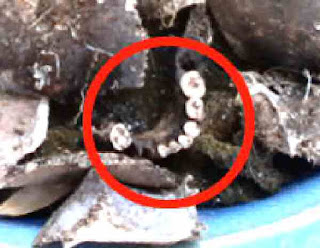Archeology: dog digs up jawbone with teeth under Tasmanian house.
A Tasmanian gentleman doing renovations to the foundations of his home has discovered a jawbone which has some white teeth still embedded therein. His dog actually located it and dug it up. Other pieces of the skull were then found by the man.
Forensic police took the "evidence" away. This find is not surprising as the house is built on top of a one hundred year old graveyard. The graveyard was supposed to be completely cleaned out before development but some skeletons were left behind.
Archeology students have flocked to the site to get some hands-on experience. The owner of the house, his daughter and dog will have to get the kettle on for all the new visitors. Maybe they can make a buck from making and selling sandwiches.
A Tasmanian gentleman doing renovations to the foundations of his home has discovered a jawbone which has some white teeth still embedded therein. His dog actually located it and dug it up. Other pieces of the skull were then found by the man.
Forensic police took the "evidence" away. This find is not surprising as the house is built on top of a one hundred year old graveyard. The graveyard was supposed to be completely cleaned out before development but some skeletons were left behind.
Archeology students have flocked to the site to get some hands-on experience. The owner of the house, his daughter and dog will have to get the kettle on for all the new visitors. Maybe they can make a buck from making and selling sandwiches.
◆ Archeologyby Ty Buchanan ◆
●
. . . . . . . . . . . . . . . . . . . . . . . . . . . . . . . . . .
JAWBONE WITH TEETH FOUND
archeology in tasmania house fouindations home girl daughter dog found jawbone teeth graveyard articles news politics economics society anthropology historiography history sociology people nations country asia europe africa u.s. south america central Mediterranean eastern western interesting funny technology free news sex
JAWBONE WITH TEETH FOUND
archeology in tasmania house fouindations home girl daughter dog found jawbone teeth graveyard articles news politics economics society anthropology historiography history sociology people nations country asia europe africa u.s. south america central Mediterranean eastern western interesting funny technology free news sex




